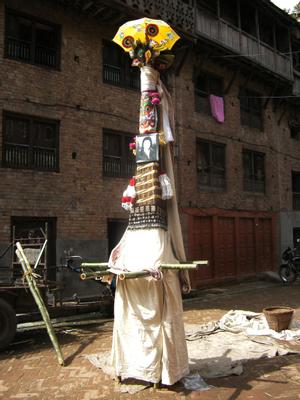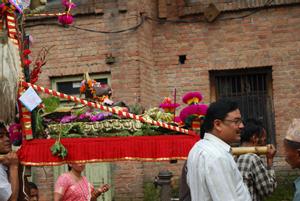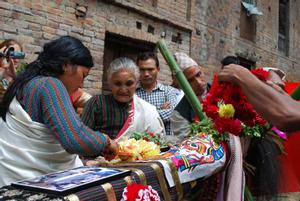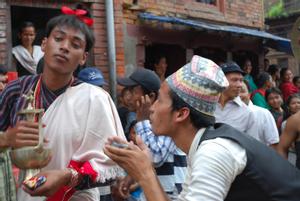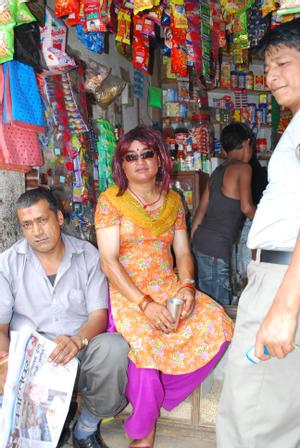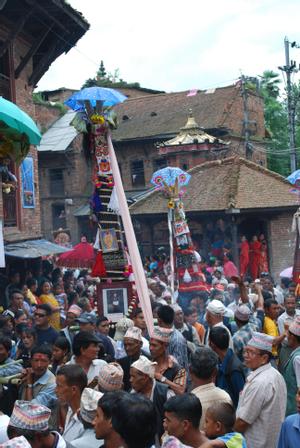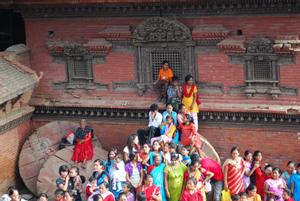Gāī Jātrā
The Gāī Jātrā, called Sāpāru in Newari, is one of the most important urban rituals in the Kathmandu Valley. The procession begins on the day after the full moon of the month of Sāun (July/August) and features decorated "cows," representatives of each person deceased during the past year, which are carried through the town. The cows, it is believed, help in the collective release of the dead’s souls by leading them across the dangerous underworld river Vaitaraṇī, during which the dead person is supposed to hold on to the cow's tail.
There are several ways to represent a cow; the most common is a framework of bamboo about three meters high called tāhāsa. Another option is the figure of a bull on a platform carried on the shoulders. Children who have not concluded the puberty rites may also participate in the procession on behalf of the deceased.
The procession begins and ends at the house of the deceased, the main part being a circumambulation of the town along a specific route (pradakṣiṇā). The "cows" are accompanied by musicians and stick dancers. Demons are supposed to be warded off by these martial sounds.
The following three elements make up the multi-faceted character of the Gāī Jātrā: Commemoration of the deceased, carnival-like city procession, and satirical commentary on social conditions. The use of masks, similar to our carnival, serves to drive away evil spirits.
At the end of the Gāī Jātrā, the cow images are thrown into the river and there is a large feast in the families, for all who participated in the procession.
In Bhaktapur, more Gāī Jātrā-s follow in the evenings for a week, usually focusing on satire and criticism.
Pratibha Chelaparampath and Sabina Maier
